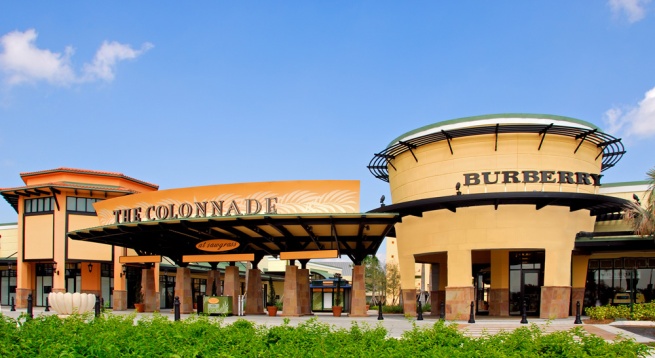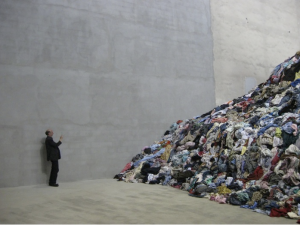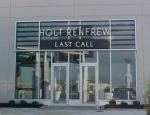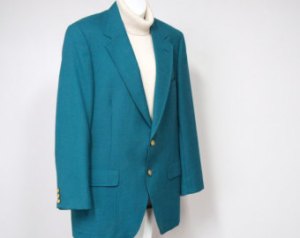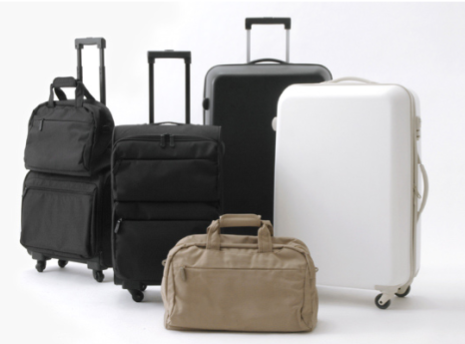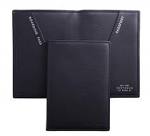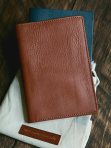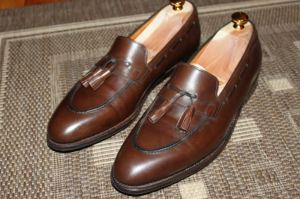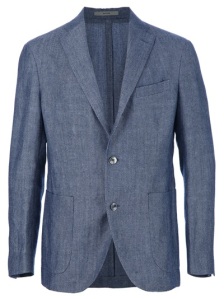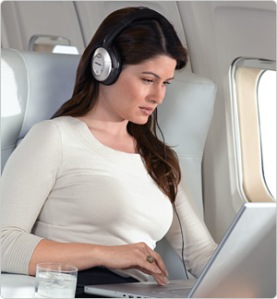I like nice things. I also, at least try, to hold onto my familial frugality. Buying something at full price has always been difficult for me – hence the full blown eBay addiction that occasionally rears its ugly head. However, as much as I love the ‘Bay, it has one tremendous downside: the inability to physically see, touch and try-on what you’re purchasing. Which brings me to the almighty Outlet Mall, the focus of this post. Outlet malls (can sometimes) provide the bargains found on eBay and they also do not share eBay’s flaws noted above. However, they have their own set of issues, which will be explored further below. eBay is great in that it has an incredible selection of rare items AND it allows you browse these items while drinking a glass of wine in a bathrobe at home. While some of the people you see at the typical outlet mall are only a half step removed from this, I would not recommend trying to mimic this experience. If you want to visit your local outlet mall (if you have one), you will need to pry yourself off the couch to experience the joys (or, more often, horrors) that are part and parcel to such an expedition. As someone who has been to many outlet malls on many occasions and has lived to tell the tale, please find some suggestions below that I hope will make your experience as good as digging through mountains of unsold goods in a crowd of people possibly can be.
1. Do not be specific
Almost daily, we hear the common refrain to “be specific”. However, if you are looking for an oxblood suede belt with silver buckle, or a specific model of Tod’s loafers, or even just a “bathrobe”, and that is the primary purpose of your shopping expedition, than I would suggest not going to an outlet mall. Outlet malls are places where you find things you aren’t looking for, but don’t find things that you are. In other words, specificity is not the forte of outlet malls. From a time-cost persepective, you will spend eons of time trying to find that specific item you’re looking for. Generally speaking, it’s not worth the time or trouble, particularly since outlet malls tend to be in the middle of nowhere. Go to your preferred local store and spend a few extra dinero, or, easier still, troll eBay or Amazon.com in the comfort of your own home rather than sacrificing your day scouring sale bins at a distant outlet mall when your chances of success approximate the odds of the Cubs winning the World Series in the next twenty years (not out of the question, but history says that it’s highly unlikely).
2. Price, time and the sphere of availability
Walk into Harry Rosen, Bergdorf Goodman, Canali, Louis Boston, etc., and say that you would like a medium grey suit with pale blue pinstripes and they will likely have an array for you to choose from. Same with the perfect yellow tie that you’re after, or the pair of brown boots you want for Fridays and the weekend. It will be an easy, comfortable shopping experience (at least it should be). When you reach the cashier with your purchases, you’ll see why: you pay for service and the ease and comfort described above. Someone else is curating for you; sifting through the litany of options and providing you with precisely what you’re looking for with you barely having to lift a finger.
Outlet stores more closely resemble the following scenario: a dump truck pulls into the back of a warehouse and dumps a massive pile of loosely sorted apparel onto the floor for you to sift through with a crowd of fellow misers. Much like Andy Dufresne, you will crawl through a pile of foulness to find the diamond in the rough. This is part of the reason why they can offer goods so cheaply; they have stripped away much of the cost associated with good customer service. I’ve made peace with this trade-off – just be prepared to spend quite a bit more time (and incur a substantially larger headache) per purchase than you normally would. Furthermore, outlet malls bring clothes that would otherwise be out of your sphere of availability into that sphere of availability, which is the reason why it may be worth the trip. That, plain and simple, is the value of outlet malls.
3. Reach for the top; ‘zig’ instead of ‘zag’
Further to “2” above, I have found the most success (and the best deals) when I’ve focused on items that I couldn’t otherwise afford, but have been made affordable at the outlet. I cannot afford a $3,000 suit; however, a $3K suit marked down to $700? That’s what you’d pay at SuitSupply or other mid-priced establishments. In other words, you are getting a far nicer suit at a price that comfortably fits within your budget.
I believe that there are a few specific reasons as to why these situations present themselves and how best to capitalize on them. The first is that people buy things that they know and recognize. Simply put, most people recognize the names ‘Gap’, ‘ Hugo Boss’ and ‘Armani’, so items from these brands will not need to be as deeply discounted to sell, and will also be substantially more “picked over” due to their brand recognition. Nearly everyone knows these names, but far, far fewer are familiar with Loro Piana, Pal Zileri, James Perse, Belstaff, Sundek, Grenson and even higher-end brands within a brand (eg. ’15 mil mil 15′ by Ermenegildo Zegna or Ralph Lauren Purple Label). These brands make fantastic quality items that, at full retail, would constitute a huge splurge over other options for the majority of people, if they even knew what they were. They may not sell at the retail store because, next to more recognizable names, people chose those recognizable names for the same price. At an outlet store, they are suddenly deeply discounted because they were passed over, only to be passed over again for more recognizable brands, even at the outlet store, and therefore often discounted again. I have, on several occasions after finding a gem gone to the retail store and asked for the brand, only to be told that they no longer carried it because it didn’t sell. Undoubtedly, there are many that are familiar with these names, but far less than more common names, which gives you a better chance of scoring a great item at a great price from a brand that flies under the radar. In addition, there are no ‘outlet brands’ for these particular marques. Companies like J. Crew, Brooks Brothers, Hugo Boss, Calvin Klein, Burberry, etc., make items specifically for their outlets, meaning that the dress shirt you think you’re getting an outstanding deal on is actually not the same shirt they sell in their retail store. I covered the idea of “outlet brands” in depth in the following post: https://onemansstyle.wordpress.com/2010/11/15/one-guys-daily-tip-beware-of-clothes-made-for-outlet-stores/
The best way to find deals at an outlet store is to be familiar with lesser known brands that make high quality items. In other words, where everyone else “zigs”, you need to “zag” to find the best deals.
Here is a “cheat sheet” of brands I’ve seen in outlets which are not as well known to the casual consumer as Banana Republic, Hugo Boss, Burberry, Prada and the like, and often are deeply discounted because of it (if you’d like to learn more about the brand, click on the name as each is link to the respective brand’s homepage): Loro Piana, Pal Zileri, Vince, Belstaff, James Perse, Grenson, Sundek, Rag & Bone, Billy Reid, Smythson, Aspesi, Charvet, Oxxford, Battistoni, Brunello Cucinelli, Turnbull & Asser, Samuelsohn, Drake’s, Nudie, Balenciaga, Mabitex, Incotex, Naked & Famous, WANT Les Essentials de la Vie, Jack Spade, Barbour, Martin Dingman and Kiton.
In other cases, many customers are unaware that a specfic brand has a variety of quality levels, leaving extremely expensive items available at deeply discounted prices. Ralph Lauren Purple Label, Ralph Lauren Black Label, RЯL, Ermenegildo Zegna ’15 mil mil 15′, Salvatore Ferragamo Tramezza, Calvin Klein Collection, Gant by Michael Bastian, Gant Rugger, etc., can provide, as many do not realize, a much higher quality level than a brand’s standard fare.
While many of you will be aware of some, or even the majority of the names found above, keep in mind that many are not. Furthermore, many that are do not frequent outlet malls. This makes the Venn Diagram’s centre very small indeed.
4. Best and worst outlets
First, it must be said that many outlet malls are not even worth bothering with. Sadly, my native country of Canada has embraced the concept of the outlet mall in much the same way as Americans have embraced the sport of curling: half-hearted at best. In Canada there are really two places worth visiting: Holt Renfrew Last Call (which, I believe, is only in Toronto now), and Harry Rosen Outlet (again, only in Toronto). Basically, if you’re not in Toronto, you’re probably out of luck, at least locally. If, however, you reside in, or near the United States, there are a number of great outlet malls potentially close by. This is particularly the case if you live in an area frequented by tourists: New York, Los Angeles, Miami/Fort Lauderdale, Niagara Falls, San Diego, Las Vegas or Phoenix. Therefore, the first decision to make is whether it’s even worth driving out to the nearby outlet mall. In many cases, it may not be worth it at all.
I’ve found the majority of my best deals at department store outlets. Barney’s New York, Century 21, Niemen Marcus Last Call, Holt Renfrew Last Call (apparently there is a shortage of outlet store names, as somehow two share the same one) and Saks Off 5th tend to be some of the best. Unfortunately, like every other store at the outlet mall, the value of these stores has been decreasing. Formerly, they were the exlusive domain of unsold merchandise from their regular stores; however, lately they have begun to sell “outlet store merchandise” – clothing manufactured expressly for outlets (usually, they are named after the store itself, eg. Saks Fifth Avenue Green). Nonetheless, these stores are still the cream of the outlet crop in terms of bargains, as there remains loads of items that went unsold at retail locaitons, providing some excellent access to nice things at good prices.
In addition, some of these stores, offer customer loyalty programs that provide even deeper discounts on items if you show the card associated with the program, or offer discounts if you sign up for a credit card.
The outlet stores I would tend to avoid are those that almost exclusively sell merchandise manufactured for outlet malls: Brooks Brothers, J. Crew, Banana Republic, Calvin Klein, etc. By and large, the prices match the quality of the items being sold.
5. Buy with purpose, not for price
You may think that the teal blazer is kind of cool and it’s down from $722.98 to $89.99! How could you lose on this deal? Well, after it sits in your closet, unworn, for 2 years, the economics no longer support this particular purchase. Don’t buy something cheap, buy something because you know it will be part of your regular rotation, or you have a specific purpose in mind for it (wedding coming up, been looking for an orange tie, you can never have too many socks…). It’s cheap and you may not have otherwise been able to afford it (“I’ve always wanted an Hermes tie… it’s just too bad it’s pink, yellow and orange, with pictures of bunnies on it…”), but that doesn’t make it a wise purchase. I have a number of items I’ve bought at outlet malls that I wear/use all of the time (my go-to carry-on bag, a number of my favourite ties, some favourite shirts, one of my favourite suits) but I’ve also had a few losers haunt my closet after the fact. You really need to win much more than you lose, otherwise you are negating the savings you believe you are getting via outlet shopping. Only buy something at an outlet mall if you’d buy it in a regular store. More is not always better when it comes to a wardrobe; I find that I gravitate towards certain items time and time again, and the remainder simply take up precious storage space in my condo. Buy like a surgeon, not a drunken gambler.
6. Get in, get out
Outlet mall trips are like commando raids – you want to get in and get out as quickly as efficiently as possible. The decending hordes typically do not get there until mid-afternoon. Be smart and go first thing in the morning. You do not need to into every store and wander around. Only go into the ones that you actually may make a purchase in. Do you really need to wait in line to get into the Coach Store? (Hold on – you WANT to get into the Coach store….? Your problems are bigger than I thought….) Outlet malls are exhausting places; don’t blow your stamina at places that are a waste of your time. If you’re there with your wife, girlfriend or friends, and your attention is starting to wane, often times there are restaurants with bars to grab a bite to eat and a drink (often times at very cheap prices – they want you to stay as long as possible, not to go elsewhere to find something to eat) when you’ve just about had enough.
